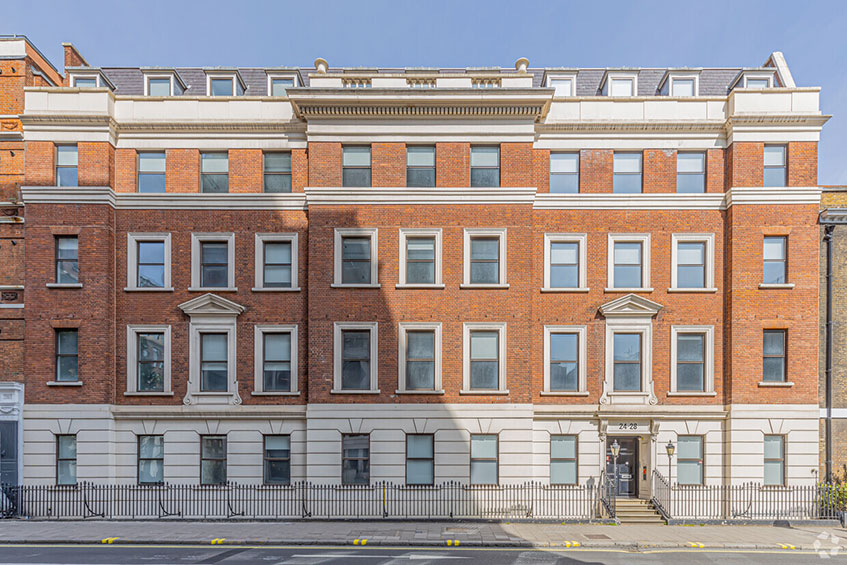Scott Goldstein and Cecily Crampin review a case on the question of limitation periods that has prompted much discussion in party wall circles.
The case of Park Lane Holdings Inc and another v Saidco International SA and others (G20CL136, County Court of Central London) has been the subject of lively discussion since judgment was handed down in July 2021, including how it addresses the issue of limitation and the Party Wall etc Act 1996, and how the law on limitation might now develop.
What happened in Park Lane?
The case was an appeal against a party wall award, and involved what might charitably be described as an unusual set of facts. The original award was made in 2009. Later that year, the adjoining owner reported a leak. The parties corresponded about the leak in the early 2010s, but this had petered out.
By 2019, the adjoining owner (a Panamanian company) was “suspendido”, and the building owner had gone into liquidation. In November 2020, acting alone, Mr Hemy (the adjoining owner’s surveyor in 2009) made an addendum award giving compensation at around €445,000, against two companies which were successive headlessees of the property which was the subject of the original works despite neither being the building owner in 2009. The two companies appealed, with 12 grounds of appeal, one of which concerned limitation.
The appellants were successful on all grounds. A couple of points should be noted. First, the appellants were unopposed in the making of submissions on those grounds. Moreover, Judge Parfitt was unimpressed with Hemy’s conduct, finding that “the circumstances in which this award has been made seem to me uniquely inappropriate and misguided”. He found that Hemy had failed to invite submissions from the appellants before making the award. Thus Hemy’s addendum award was found to have offended basic principles of natural justice.
Finally, ruling on ground one, the judge found that Hemy had no jurisdiction to make the addendum award, because such jurisdiction as he did have derived from his appointment under the original 2009 award in relation only to the original building and adjoining owners, not the appellants. The judge concluded: “Ground 1 is made out and the Award of November 2020 is set aside on that basis… That means I do not have the need to carry on beyond Ground 1, but I will deal with the other grounds because it seems to me they are all valid grounds.”
The judge’s further findings on the limitation point, though persuasive, might be considered to be obiter. This, then, is the context in which the judge’s comments on limitation should be considered.
The question of limitation
On limitation, the judge found that a claim by an adjoining owner for compensation under the 1996 Act, because it is a claim under statute, has a limitation period of six years from the date of damage, under section 9 of the Limitation Act 1980. The time limit in section 9 relates to “an action to recover any sum recoverable by virtue of any enactment”. Thus, its application requires a dispute about compensation (and the party wall award making process to resolve it) to be an “action” within the definition in section 38 of the 1980 Act. The judge accepted that section 38 gives a sufficiently wide definition.
This is not the first case where a statute has set out a specific method for determining quantum, so that the question arose whether time, for the purpose of section 9 of the 1980 Act, started running when the damage was done or when the statutory determination of quantum was made. Counsel for K Group cited Hillingdon London Borough Council v ARC Ltd [1999] 3 EGLR 125, in which that point arose under the then statutory process for determining compensation for compulsory purchase. In Hillingdon, the level of compensation had to be determined by the Lands Tribunal (as it then was). Nevertheless, time started running when the local authority took possession of the compulsorily purchased land, not when the Lands Tribunal determined compensation, with the exercise of quantification found to be an action under section 38.
Judge Parfitt agreed that a like analysis applied. Thus “limitation would start to run from whatever date it was in 2009 when [the subject flat] first suffered damage”. The judge considered this to be sensible, because it would mean that limitation would be aligned with limitation for an action in tort. That outcome also accords with the policy of preventing stale claims. If time only started running from the date of an award, an adjoining owner could initiate the making of such an award many years after damage was caused, when evidence might well have been lost.
The implications of the decision
There is, of course, room for lawyers acting for future litigants in party wall disputes to argue the contrary case on limitation. Though the judge is very well-respected and this is a persuasive judgment, a decision of the county court at central London is not binding.
Assuming that the decision is correct, what is its scope? While the limitation period commences on the date of damage, the judgment does not say what steps by an adjoining owner are the “action” which stops time running. In Hillingdon, the action was initiating the process of quantification by application to the Lands Tribunal. It seems that the action under section 9 of the Limitation Act 1980, in relation to a claim for compensation under the 1996 Act, is initiating the dispute resolution process under section 10 of the 1996 Act. There must be a dispute between the parties as to whether compensation is due, and the adjoining owner seeking compensation must have appointed his surveyor to determine that dispute under section 10. That accords with another successful ground of appeal in Park Lane, that surveyors must be appointed for each new dispute between the parties, so that a dispute about compensation can lead to the appointment of new surveyors, rather than the surveyors first appointed remaining until all possible issues arising from a party wall notice have been resolved.
If that is right, an adjoining owner would be well advised to write to the building owner, considerably before the six-year period from the date of damage, saying: “Your works have caused damage for which I seek compensation under the Act. Either agree that is so, and a sum to pay me in compensation by a certain date or I will appoint a surveyor, require you to do so too, or appoint one for you under section 10(4).” It would also suggest, where limitation might be an issue, that it is good practice to confirm in writing the appointment of a surveyor for each matter in dispute, rather than allowing the same surveyor’s continued appointment without written confirmation. That would give better evidence that the surveyor’s appointment has been made, to stop time running.
What about the position if the Park Lane decision is wrong, and limitation starts running from the date of an award, not from the date of damage? K Group’s written submissions on its grounds of appeal made an alternative case to its limitation case. K Group said the addendum award ought not to have been made because of the lapse of time. Party wall surveyors should apply the Limitation Act 1980 by analogy, as was done by the courts of equity, and not make awards about issues well in the past when a similar common law claim would be statute-barred. Alternatively again, K Group said, a party wall surveyor acting in their quasi-judicial capacity should not make an award about a stale dispute because that is not fair or just. The judgment was silent on these points. One might imagine this argument being deployed by a building owner in a future case.
The key takeaway
Before Park Lane, what commentary on the issue there was suggested, as per a strongly held theory about the workings of the 1996 Act, that the process is not limited by procedural issues such as this, and party wall surveyors appointed at the beginning of the process have a relatively unlimited jurisdiction with little room for the parties to control them. The decision on the issue in Park Lane seems in accordance with perhaps a more current judicial trend to impose constraints on the party wall process more consistent with the principles of justice we are used to in courts and tribunals.
What is clear, one year on, is that given the considerable uncertainty arising from the case and the considerable discussion the decision has led to in party wall circles, an adjoining owner who has suffered damage from party wall works ought to act with all reasonable speed to encourage the surveyors to make a party wall award if they are to avoid facing limitation issues.
Scott Goldstein is a partner at Payne Hicks Beach LLP and Cecily Crampin is a barrister at Falcon Chambers







